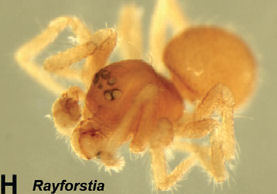
Thyme is a culinary herb consisting of the dried aerial parts of some members of the genus Thymus of flowering plants in the mint family Lamiaceae. Thymes are native to Eurasia and north Africa. Thymes have culinary, medicinal, and ornamental uses. The species most commonly cultivated and used for culinary purposes is Thymus vulgaris, native to Southeast Europe.

Syringa is a genus of 12 currently recognized species of flowering woody plants in the olive family or Oleaceae called lilacs. These lilacs are native to woodland and scrub from southeastern Europe to eastern Asia, and widely and commonly cultivated in temperate areas elsewhere.

Phaseolus vulgaris, the common bean, is a herbaceous annual plant grown worldwide for its edible dry seeds or green, unripe pods. Its leaf is also occasionally used as a vegetable and the straw as fodder. Its botanical classification, along with other Phaseolus species, is as a member of the legume family Fabaceae. Like most members of this family, common beans acquire the nitrogen they require through an association with rhizobia, which are nitrogen-fixing bacteria.

Chard or Swiss chard is a green leafy vegetable. In the cultivars of the Flavescens Group, the leaf stalks are large and often prepared separately from the leaf blade; the Cicla Group is the leafy spinach beet. The leaf blade can be green or reddish; the leaf stalks are usually white, yellow or red.

Calluna vulgaris, common heather, ling, or simply heather, is the sole species in the genus Calluna in the flowering plant family Ericaceae. It is a low-growing evergreen shrub growing to 20 to 50 centimetres tall, or rarely to 1 metre (40 in) and taller, and is found widely in Europe and Asia Minor on acidic soils in open sunny situations and in moderate shade.

The Auckland Island merganser, also known as the New Zealand merganser, was a typical merganser that is now extinct.

Berberis, commonly known as barberry, is a large genus of deciduous and evergreen shrubs from 1–5 m (3.3–16.4 ft) tall, found throughout temperate and subtropical regions of the world. Species diversity is greatest in South America and Asia; Europe, Africa and North America have native species as well. The best-known Berberis species is the European barberry, Berberis vulgaris, which is common in Europe, North Africa, the Middle East, and central Asia, and has been widely introduced in North America. Many of the species have spines on the shoots and all along the margins of the leaves.

The New Zealand goose is a bird of the extinct genus Cnemiornis of the family Anatidae, subfamily Anserinae. The genus, endemic to New Zealand, consisted of two species: the North Island goose, C. gracilis and the South Island goose C. calcitrans.

Rayforstia is a genus of spiders in the family Anapidae. It was first described in 2010 by Rix & Harvey. As of 2017, it contains 12 species.

The Chatham Island merganser is an extinct species of merganser duck from New Zealand. The binomial name refers to Dr. Philip Millener, to recognise his work in collecting material on the species.

Thanatus vulgaris is a species of running crab spider in the family Philodromidae. It is found in North America, Europe, North Africa, Turkey, Israel, Caucasus, a range from Russia, Central Asia, China, and Korea.

Tangata rakiura is a species of araneomorph spider of the genus Tangata. The species is endemic to New Zealand

Ascuta australis is a species of Orsolobidae spider of the genus Ascuta. The species is endemic to New Zealand
Holarchaea globosa is one of only two described species in the spider genus Holarchaea. The species is endemic to Australia, specifically Tasmania.
Rayforstia salmoni is a species of Anapidae that is endemic to New Zealand. The species was first described by Ray Forster in 1959.
Rayforstia propinqua is a species of Anapidae that is endemic to New Zealand. The species was first described by Ray Forster in 1959.
Rayforstia plebeia is a species of Anapidae that is endemic to New Zealand. The species was first described by Ray Forster in 1959.

Rayforstia wisei is a species of Anapidae that is endemic to New Zealand.
Rayforstia raveni is a species of Anapidae that is endemic to New Zealand. The species was first described by Michael G. Rix and Mark Harvey in 2010.
Magnoteuthis osheai is a species of squid in the genus Magnoteuthis. The species has been observed off the coast of New Zealand.














